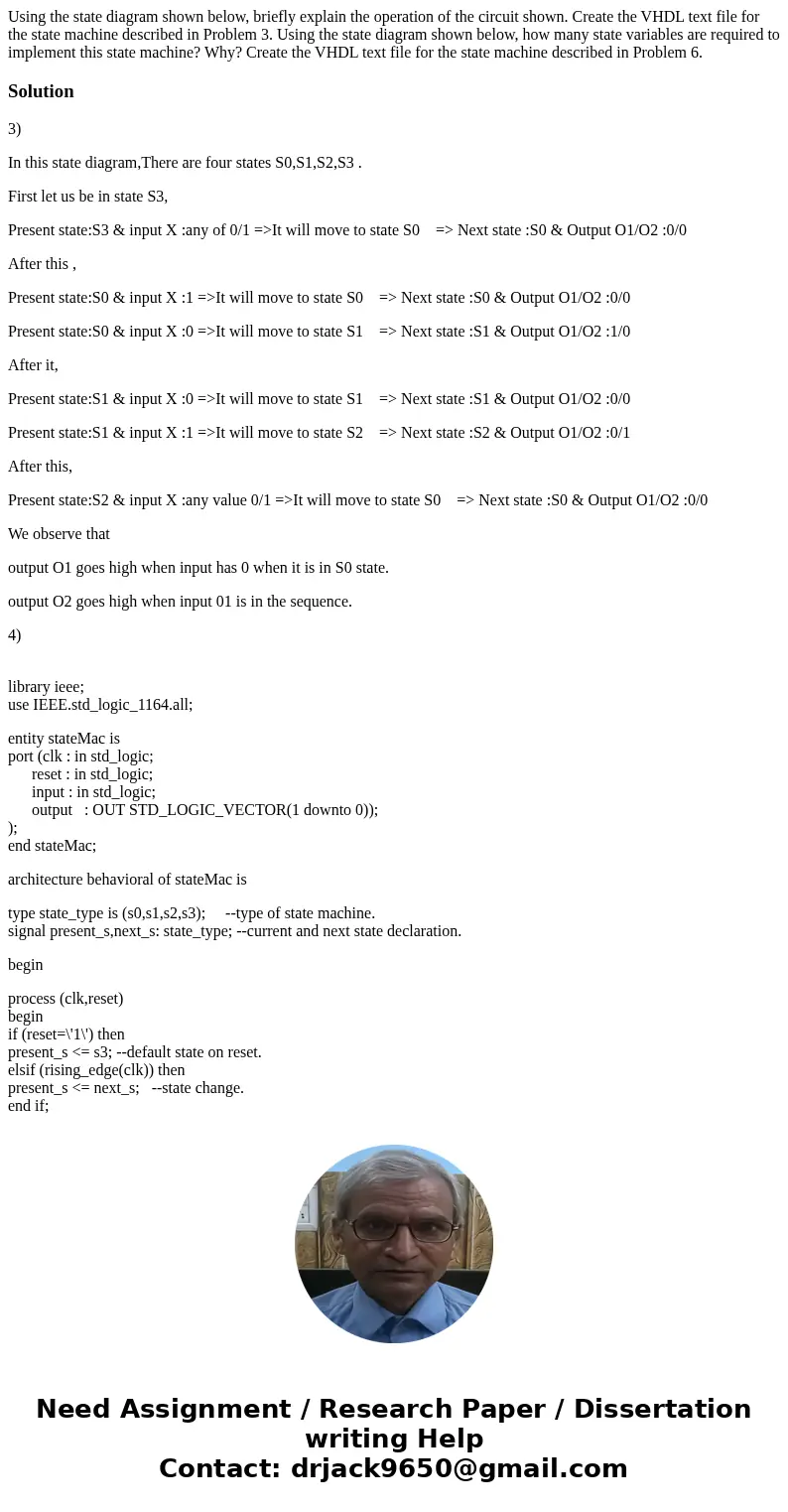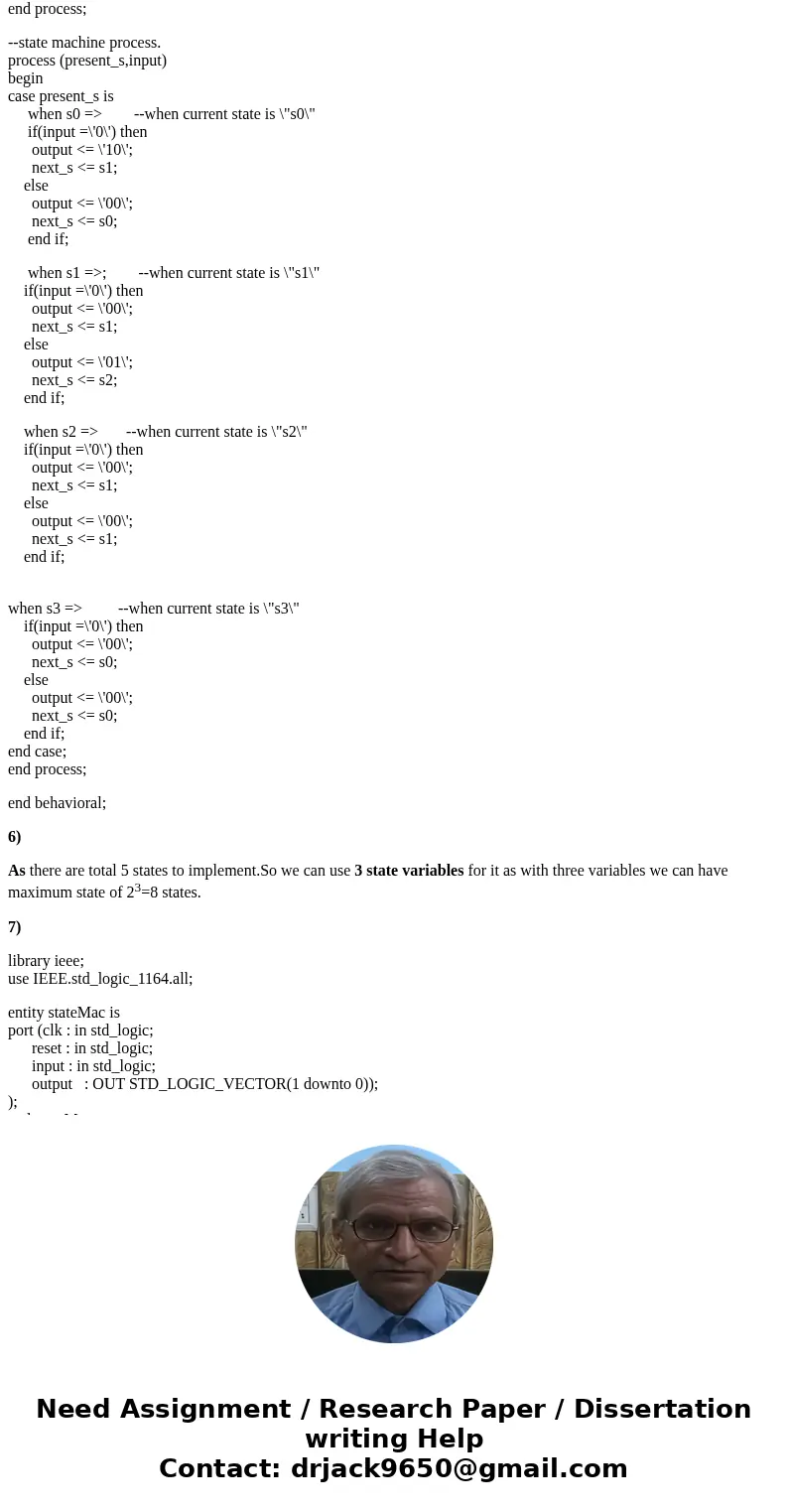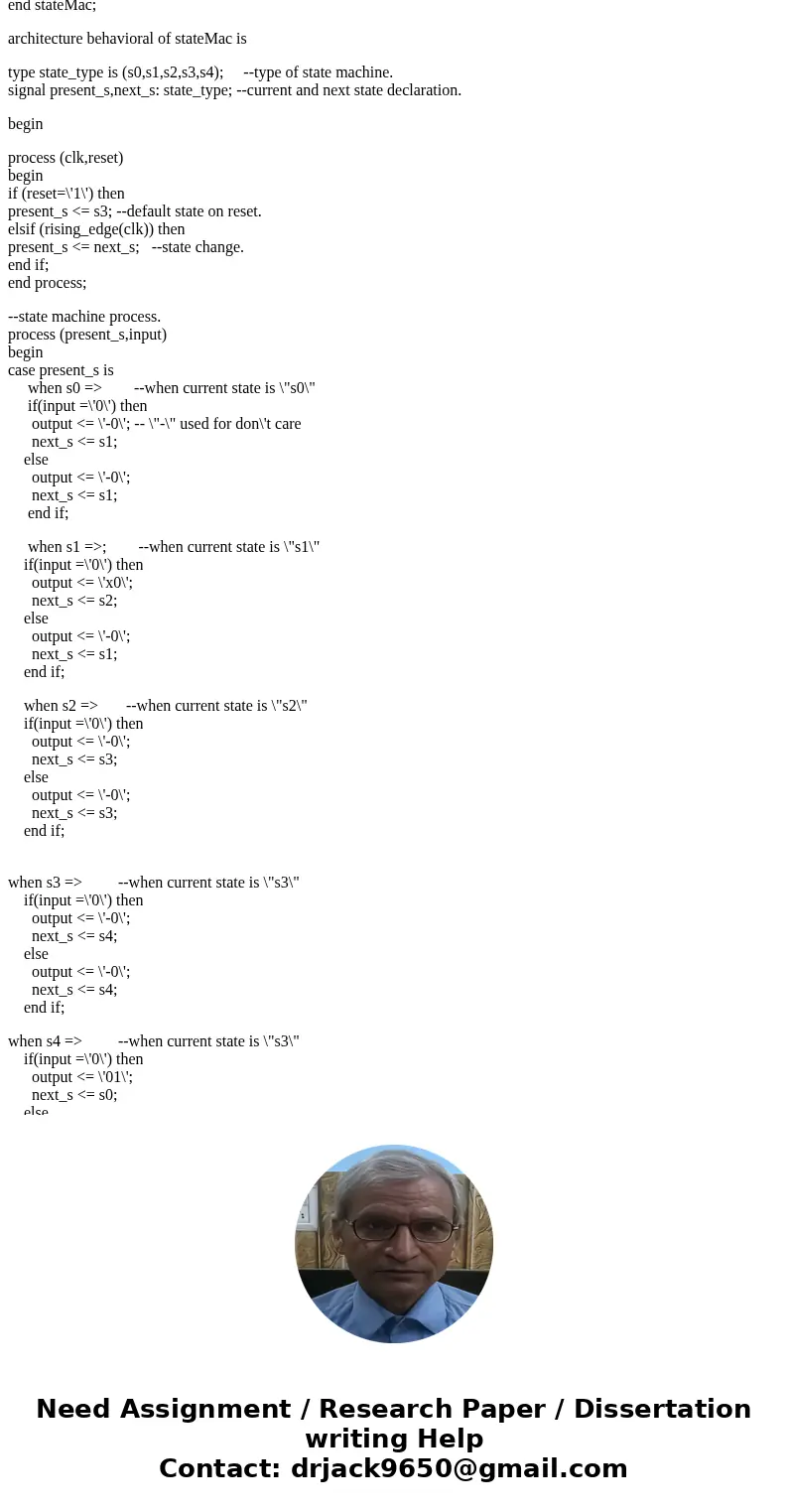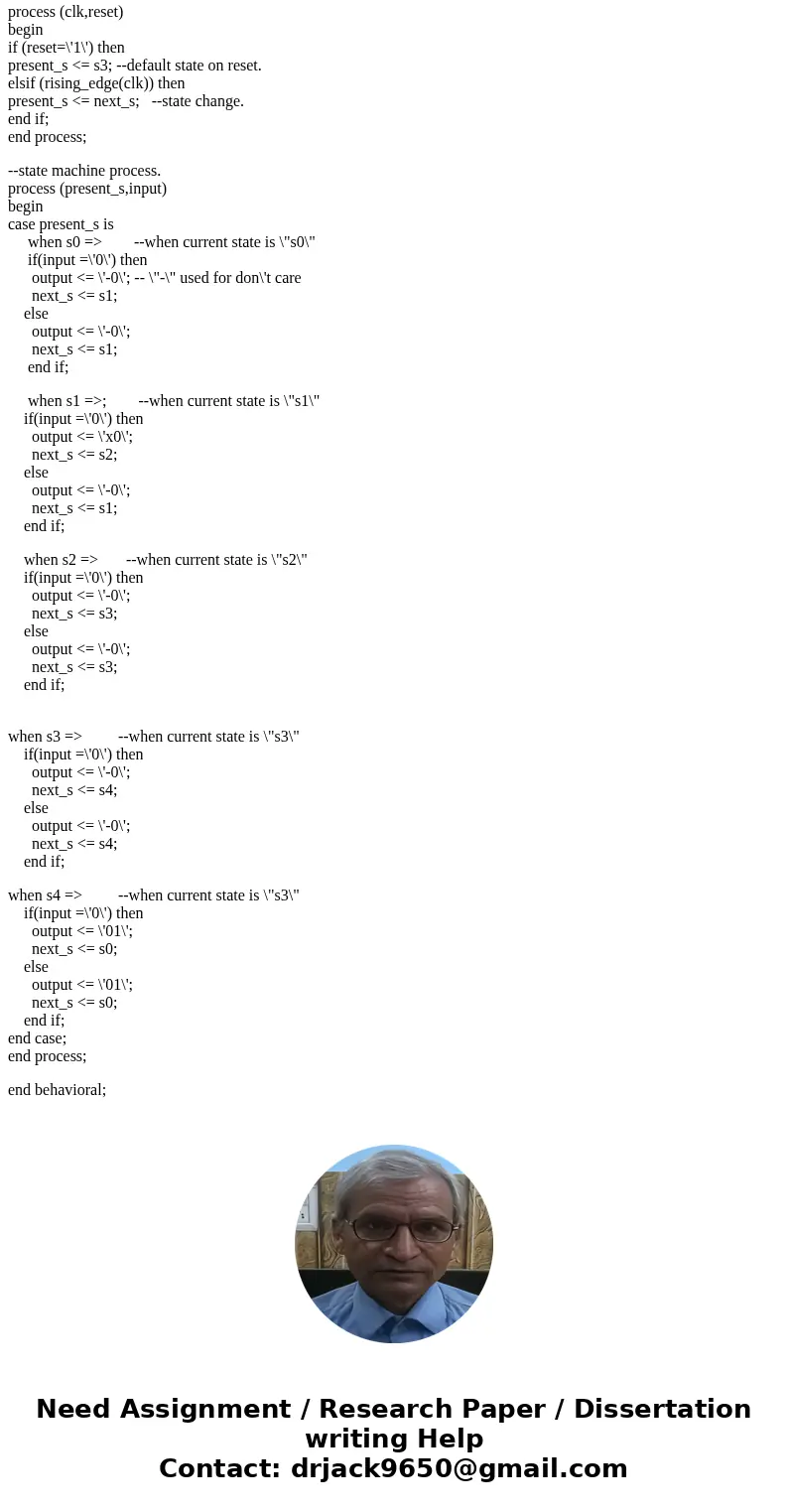Using the state diagram shown below briefly explain the oper
Solution
3)
In this state diagram,There are four states S0,S1,S2,S3 .
First let us be in state S3,
Present state:S3 & input X :any of 0/1 =>It will move to state S0 => Next state :S0 & Output O1/O2 :0/0
After this ,
Present state:S0 & input X :1 =>It will move to state S0 => Next state :S0 & Output O1/O2 :0/0
Present state:S0 & input X :0 =>It will move to state S1 => Next state :S1 & Output O1/O2 :1/0
After it,
Present state:S1 & input X :0 =>It will move to state S1 => Next state :S1 & Output O1/O2 :0/0
Present state:S1 & input X :1 =>It will move to state S2 => Next state :S2 & Output O1/O2 :0/1
After this,
Present state:S2 & input X :any value 0/1 =>It will move to state S0 => Next state :S0 & Output O1/O2 :0/0
We observe that
output O1 goes high when input has 0 when it is in S0 state.
output O2 goes high when input 01 is in the sequence.
4)
library ieee;
use IEEE.std_logic_1164.all;
entity stateMac is
port (clk : in std_logic;
reset : in std_logic;
input : in std_logic;
output : OUT STD_LOGIC_VECTOR(1 downto 0));
);
end stateMac;
architecture behavioral of stateMac is
type state_type is (s0,s1,s2,s3); --type of state machine.
signal present_s,next_s: state_type; --current and next state declaration.
begin
process (clk,reset)
begin
if (reset=\'1\') then
present_s <= s3; --default state on reset.
elsif (rising_edge(clk)) then
present_s <= next_s; --state change.
end if;
end process;
--state machine process.
process (present_s,input)
begin
case present_s is
when s0 => --when current state is \"s0\"
if(input =\'0\') then
output <= \'10\';
next_s <= s1;
else
output <= \'00\';
next_s <= s0;
end if;
when s1 =>; --when current state is \"s1\"
if(input =\'0\') then
output <= \'00\';
next_s <= s1;
else
output <= \'01\';
next_s <= s2;
end if;
when s2 => --when current state is \"s2\"
if(input =\'0\') then
output <= \'00\';
next_s <= s1;
else
output <= \'00\';
next_s <= s1;
end if;
when s3 => --when current state is \"s3\"
if(input =\'0\') then
output <= \'00\';
next_s <= s0;
else
output <= \'00\';
next_s <= s0;
end if;
end case;
end process;
end behavioral;
6)
As there are total 5 states to implement.So we can use 3 state variables for it as with three variables we can have maximum state of 23=8 states.
7)
library ieee;
use IEEE.std_logic_1164.all;
entity stateMac is
port (clk : in std_logic;
reset : in std_logic;
input : in std_logic;
output : OUT STD_LOGIC_VECTOR(1 downto 0));
);
end stateMac;
architecture behavioral of stateMac is
type state_type is (s0,s1,s2,s3,s4); --type of state machine.
signal present_s,next_s: state_type; --current and next state declaration.
begin
process (clk,reset)
begin
if (reset=\'1\') then
present_s <= s3; --default state on reset.
elsif (rising_edge(clk)) then
present_s <= next_s; --state change.
end if;
end process;
--state machine process.
process (present_s,input)
begin
case present_s is
when s0 => --when current state is \"s0\"
if(input =\'0\') then
output <= \'-0\'; -- \"-\" used for don\'t care
next_s <= s1;
else
output <= \'-0\';
next_s <= s1;
end if;
when s1 =>; --when current state is \"s1\"
if(input =\'0\') then
output <= \'x0\';
next_s <= s2;
else
output <= \'-0\';
next_s <= s1;
end if;
when s2 => --when current state is \"s2\"
if(input =\'0\') then
output <= \'-0\';
next_s <= s3;
else
output <= \'-0\';
next_s <= s3;
end if;
when s3 => --when current state is \"s3\"
if(input =\'0\') then
output <= \'-0\';
next_s <= s4;
else
output <= \'-0\';
next_s <= s4;
end if;
when s4 => --when current state is \"s3\"
if(input =\'0\') then
output <= \'01\';
next_s <= s0;
else
output <= \'01\';
next_s <= s0;
end if;
end case;
end process;
end behavioral;




 Homework Sourse
Homework Sourse